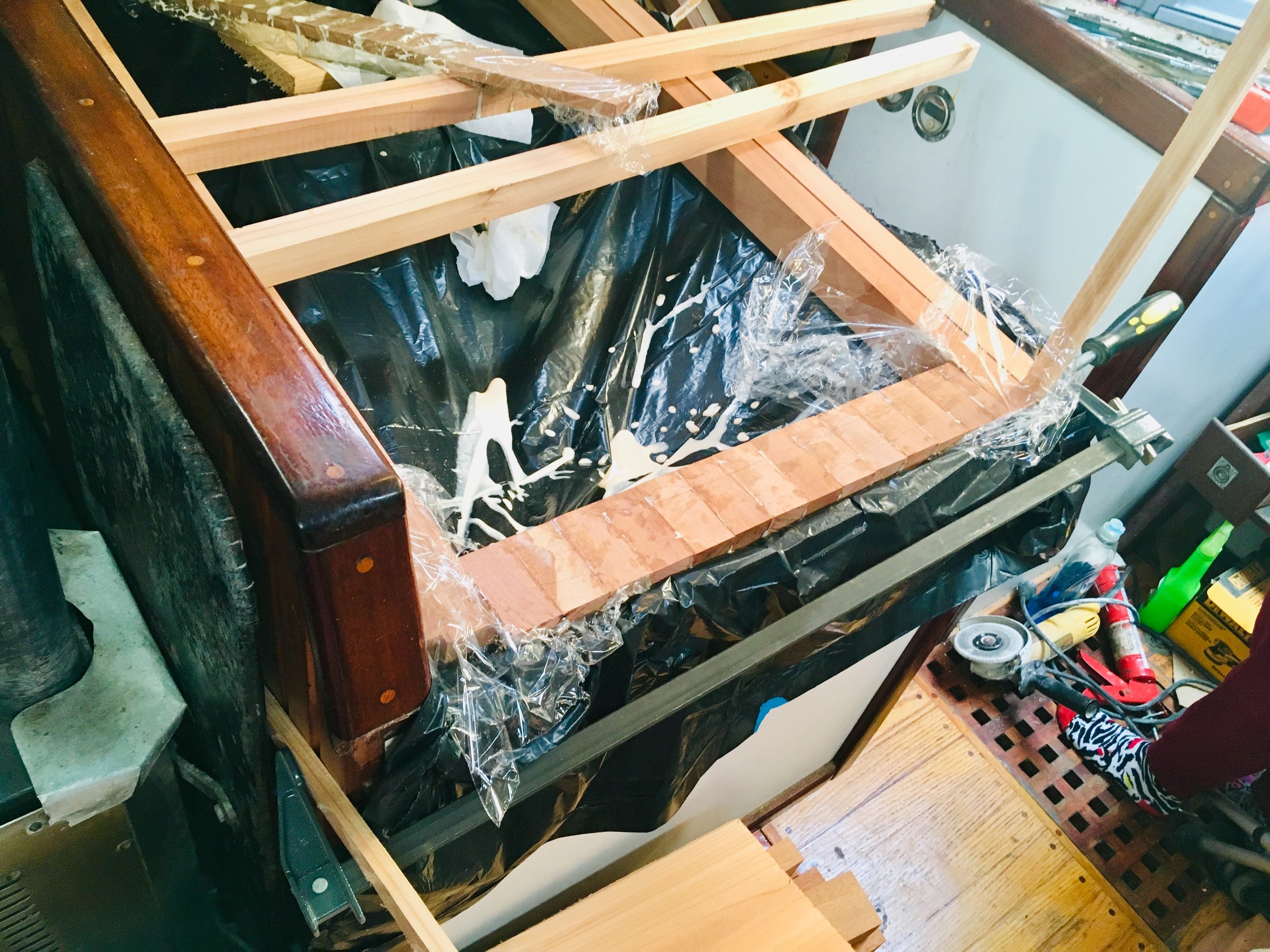Undermount sinks look sleek, clean, and modern, but do they work in a boat?
Undermount sinks are attached to the underside of the counter by tiny dinky little clips. Their attachment is aided by the use of adhesive to help hold it on to the underside of the counters while also sealing out any water that might try to leak through the gap between the counter and the sink.
This is all well and good in a house that doesn’t move much, but a boat is the equivalent of living on a fault line while speeding through time. Every day, the boat will cycle through hundreds of movements, each making the entire boat flex and twist. If the heavy sink is hanging from the underside of the counter, it will soon become separated and disconnected from the underside and could possibly just fall off!
So, how do you do it? How do you undermount a sink in a boat? Easy! You top mount the sink beneath the counter!
Under this pretty mahogany butcher block lives an ugly sheet of plywood with a hole cut in it to hold the sink. The sink is simply dropped into this hole and firmly attached to it as a regular drop-in sink. There is no way the sink could possibly fall since it is sitting onto of a sheet of plywood! The pretty counter is then mounted over the sink and firmly fastened into place and the appropriate caulking performed to keep out any leaks.
In a boat, undermounted sinks are better thought of as “sandwich mounted” sinks, where the sink is sandwiched between a plywood sub-counter and the visible counter.



















